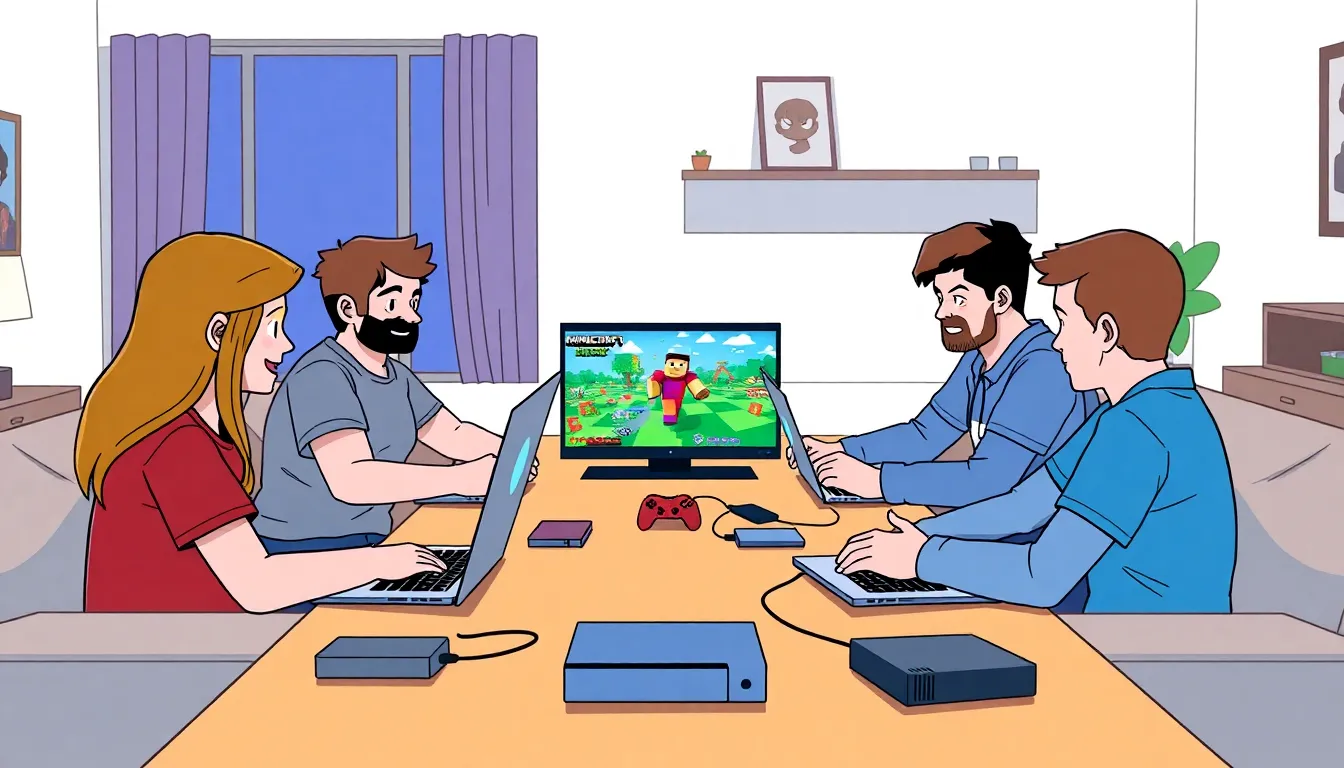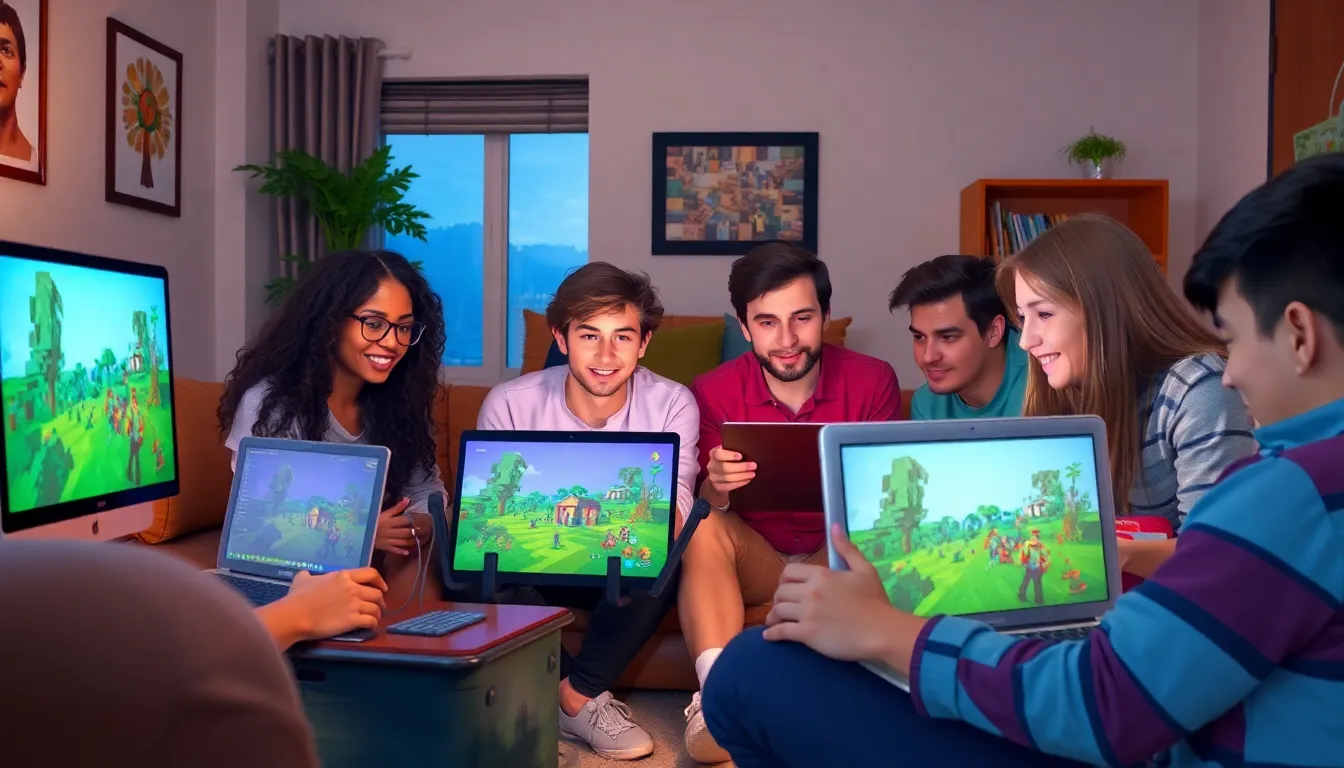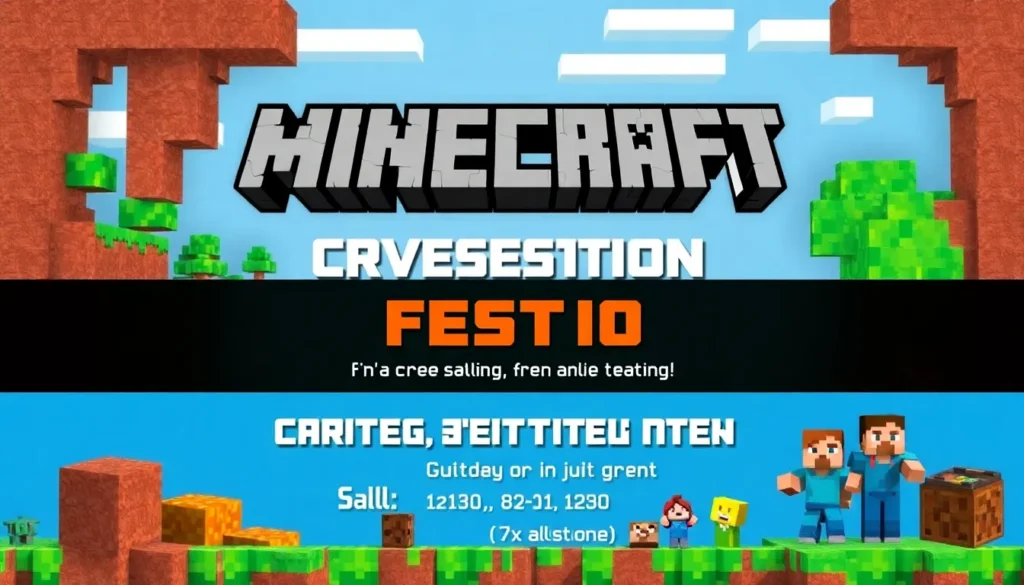Imagine gearing up for an epic Minecraft adventure with friends, only to find yourself stranded in the land of “Connection Lost.” It’s like preparing for a grand feast and discovering the oven’s broken. Frustrating, right? Multiplayer mode should be a thrilling experience, not a tech support nightmare.
Common Causes of Minecraft Multiplayer Not Working
Technical issues can disrupt multiplayer gameplay. Several factors could lead to connection problems that hinder interactions with friends.
Network Issues
Network problems often prevent successful multiplayer connections. Slow internet speeds may cause lag, making it difficult to play smoothly. Firewalls, either on the router or the computer, can block Minecraft’s connection. Some users also experience issues due to Network Address Translation settings on routers. Having an unstable Wi-Fi signal disrupts the connection further, leading to frequent disconnections. Checking the network stability and configuration usually helps resolve these issues.
Server Problems
Server problems create barriers to joining multiplayer games. Overloaded servers can lead to long wait times or connection failures. Downtime or maintenance performed by server hosts may temporarily disable access. Occasionally, there may be problems with the server settings that prevent players from being able to connect. Verifying the server status and connection settings aids in troubleshooting these issues effectively.
Game Version Mismatches
Game version mismatches can hinder multiplayer interactions. Players running different Minecraft versions may find themselves unable to join the same server. Each server typically requires a specific game version for compatibility. Checking for updates and ensuring all players are on the same software version addresses this issue. Using the correct game version helps maintain a seamless and enjoyable multiplayer experience.
Troubleshooting Steps


Follow these steps to resolve multiplayer issues in Minecraft effectively.
Checking Internet Connection
Test the internet connection to ensure stability. Unstable networks disrupt gameplay, so running a speed test can help identify slow speeds. Check for interruptions by restarting the router and ensuring no devices consume excessive bandwidth. Use a wired connection when possible, as it offers more reliable connectivity than Wi-Fi. Verify that the internet service provider is not experiencing outages, as this can impact gaming performance.
Verifying Game Settings
Confirm that all players use the same game version to connect successfully. Mismatched versions create barriers, preventing connections to multiplayer servers. Check game settings for any disabled multiplayer options. Adjust the “Online Mode” setting to allow multiplayer access. Look into the server IP address entered, ensuring it is correct and matches the server details shared by friends. Sometimes issues arise from mistakenly using an outdated or incorrect server address.
Restarting the Game
Restarting the Minecraft game often resolves underlying technical glitches. Close the application completely, then relaunch it to refresh connections. If issues persist, consider restarting the device to clear temporary files and improve performance. After the restart, attempt to reconnect with friends to see if the problem resolves. Encouraging others to restart their games can also help, as syncing connections between players is crucial for smooth multiplayer experiences.
Alternative Solutions
Several alternative solutions exist that help address Minecraft multiplayer connection issues. Exploring these options can enhance the gaming experience significantly.
Using a Virtual Private Network (VPN)
Utilizing a VPN can sometimes improve connection stability. A VPN creates a secure tunnel between the player’s device and the game server. This can bypass network restrictions and reduce lag. Selecting a reliable VPN service is crucial, as not all providers ensure fast speeds. Testing different servers within the VPN can also reveal optimal connectivity. Players should ensure that their VPN configuration supports the necessary protocols for Minecraft.
Connecting to Different Servers
Connecting to different servers can resolve persistent multiplayer issues. Sometimes, the selected server may face overcrowding or maintenance. Exploring alternative servers allows players to find less busy options. Players should verify server status via external platforms or forums. It’s beneficial to prioritize servers closer to your geographical location. Lower latency typically translates to a better gaming experience. Ensuring compatibility with the game version before switching servers is essential.
Updating Game and Launcher
Updating both the game and launcher serves as a simple yet effective solution. Outdated software often causes compatibility issues, leading to multiplayer disruptions. Regularly checking for updates ensures players have the latest features and security patches. Navigating to the official Minecraft launcher allows quick access to available updates. It’s advisable to enable automatic updates for convenience. Encouraging all players to maintain updated software reinforces stable connections.
Experiencing multiplayer issues in Minecraft can be frustrating but it doesn’t have to ruin the gaming experience. By systematically troubleshooting connectivity problems and ensuring all players are on the same game version, many issues can be resolved. Exploring alternative solutions like using a VPN or connecting to different servers can further enhance gameplay. Staying proactive with game updates and checking server statuses can help maintain a smooth multiplayer experience. With the right approach players can get back to enjoying their adventures together without the stress of technical difficulties.








